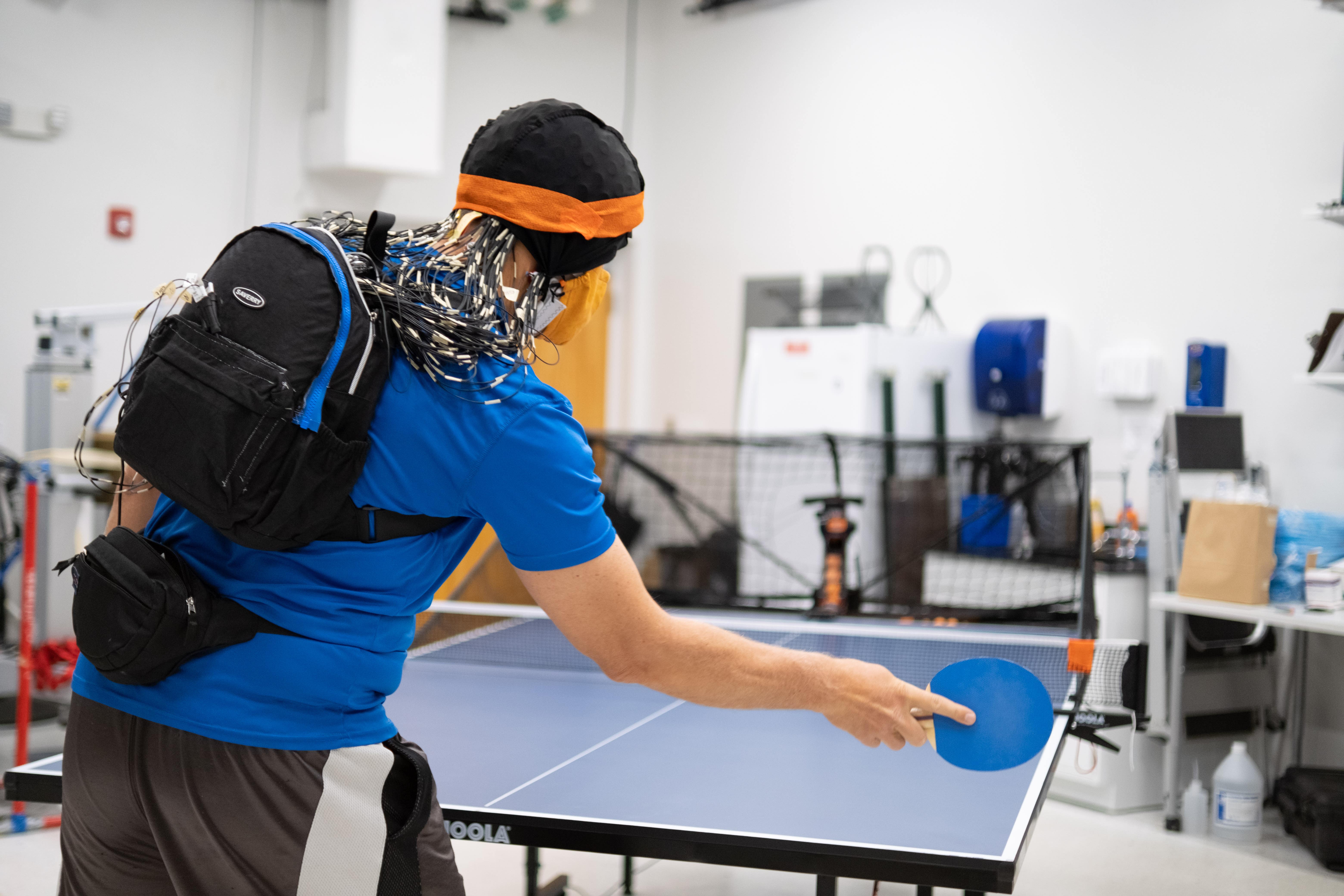Playing sport against robots makes human brain work harder, research suggests
Brain scans taken during table tennis matches reveal differences in how players respond to human versus machine opponents.

Your support helps us to tell the story
From reproductive rights to climate change to Big Tech, The Independent is on the ground when the story is developing. Whether it's investigating the financials of Elon Musk's pro-Trump PAC or producing our latest documentary, 'The A Word', which shines a light on the American women fighting for reproductive rights, we know how important it is to parse out the facts from the messaging.
At such a critical moment in US history, we need reporters on the ground. Your donation allows us to keep sending journalists to speak to both sides of the story.
The Independent is trusted by Americans across the entire political spectrum. And unlike many other quality news outlets, we choose not to lock Americans out of our reporting and analysis with paywalls. We believe quality journalism should be available to everyone, paid for by those who can afford it.
Your support makes all the difference.The human brain works much harder when playing sport against robots, scientists have found.
Researchers from the University of Florida analysed dozens of hours of table tennis matches where humans were pitted against machines and each other.
Players wore electrode caps so their brain activity could be monitored during the games.
Scientists found that when playing against each other, the players’ brains worked in unison, “like they were all speaking the same language”.
Desynchronisation is an indication that the brain is doing a lot of calculations as opposed to sitting and idling
But when the players faced a ball-serving machine, the neurons – nerve cells – in their brains were not aligned in the same way, a phenomenon known as desynchronisation.
Daniel Ferris, a professor of biomedical engineering at the University of Florida, said: “If we have 100,000 people in a football stadium and they’re all cheering together, that’s like synchronisation in the brain, which is a sign the brain is relaxed.
“If we have those same 100,000 people but they’re all talking to their friends, they’re busy but they’re not in sync.
“In a lot of cases, that desynchronisation is an indication that the brain is doing a lot of calculations as opposed to sitting and idling.”
The researchers said their work, published in the journal eNeuro, shows that the brain works harder when playing against robots because machines do not provide any cues about what they are going to do next.
Prof Ferris, who is one of the study authors, said: “Humans interacting with robots is going to be different than when they interact with other humans.
“Our long-term goal is to try to understand how the brain reacts to these differences.”
The researchers said that as robots grow more common and sophisticated, understanding how the human brain responds to an opponent’s moves could allow engineers to design robots to be more naturalistic.
Amanda Studnicki, a graduate student at the University of Flordia, who was part of the research team, said: “I still see a lot of value in practising with a machine.
“But I think machines are going to evolve in the next 10 or 20 years, and we could see more naturalistic behaviours for players to practise against.”
The research is published in the journal eNeuro.